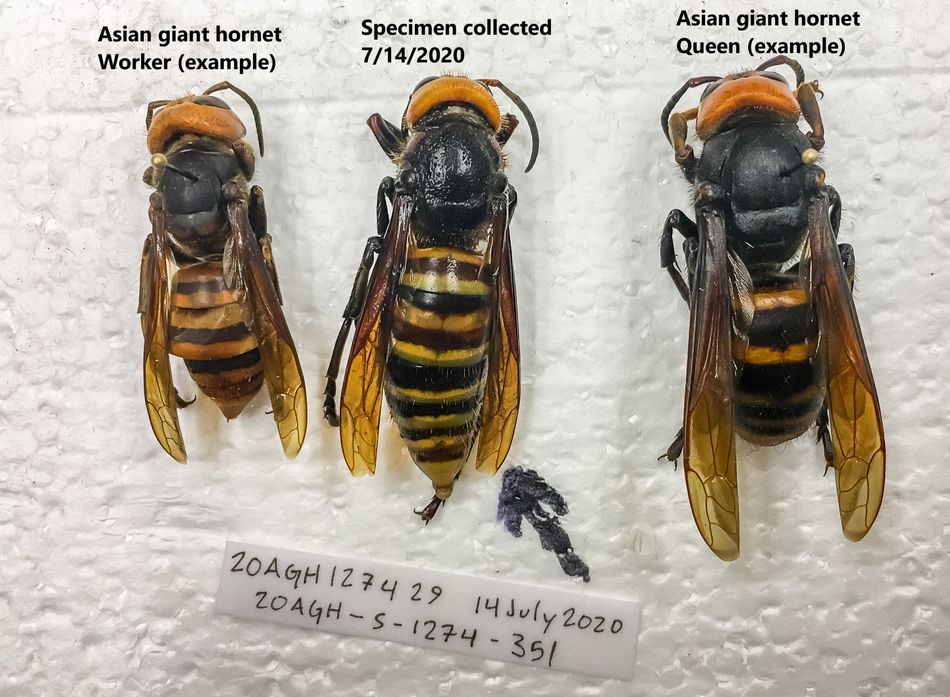Don’t call it a “murder hornet.”
The stinging. honeybee-hunting insect that first made the news in May is back in headlines once again. Months after it was first sighted in the U.S., the Washington State Department of Agriculture actually managed to catch one in a trap.
A WSDA press release confirms that an Asian giant hornet was recovered on July 14 from a trap set near Birch Bay, just south of the Canadian border. It wasn’t formally identified until July 29, at which point it became the first of its species to be caught in the U.S., following five previous sightings.
The state agency characterized the news as “encouraging.” While it’s not great that the invasive species of hornet is indeed present in the U.S., having a viable trap means work can begin on finding and eradicating nests.
Captured hornets can be tagged and tracked, turning them into tiny, unwilling narcs that guide researchers back to their colonies. It’s important to root them out before mid-September because that’s when more queens will start to arrive, which means more nests.

Image: Washington State Department of Agriculture
Much has been said about the danger that Asian giant hornets pose to humans – not entirely incorrectly – but the real danger is to honeybees. These aggressive hornets feed on insects, and it takes no more than a few dozen to tear apart a beehive.
That’s a problem because the U.S. honeybee population has been in decline for years, and human survival depends in part on their continued existence. Their pollination efforts are vital to keeping the global food supply chain alive.
Asian giant hornets do represent a threat to humans, too. Their sting is multiple times stronger than that of an average honeybee, and multiple stings can be fatal. They don’t hunt humans or anything – that’s just horror movie fare – but they’re aggressive and territorial, so human death is a possibility if they gain enough of a foothold.
The WSDA effort to contain their presence has been aided in part by help from the public, with the agency crediting “citizen scientist” efforts for the creation of more than 1,3000 traps. There are even instructions provided for trapping and sending hornets off for research.
The press release cautions Washington residents to watch for Asian giant hornets in August and September in particular. Colonies grow and worker numbers increase during this time. Even if you find a dead one – they can grow to sizes of 2 inches or more – it’s a good idea to recover it and send it off for testing, along with any other details or photos that might be pertinent.
